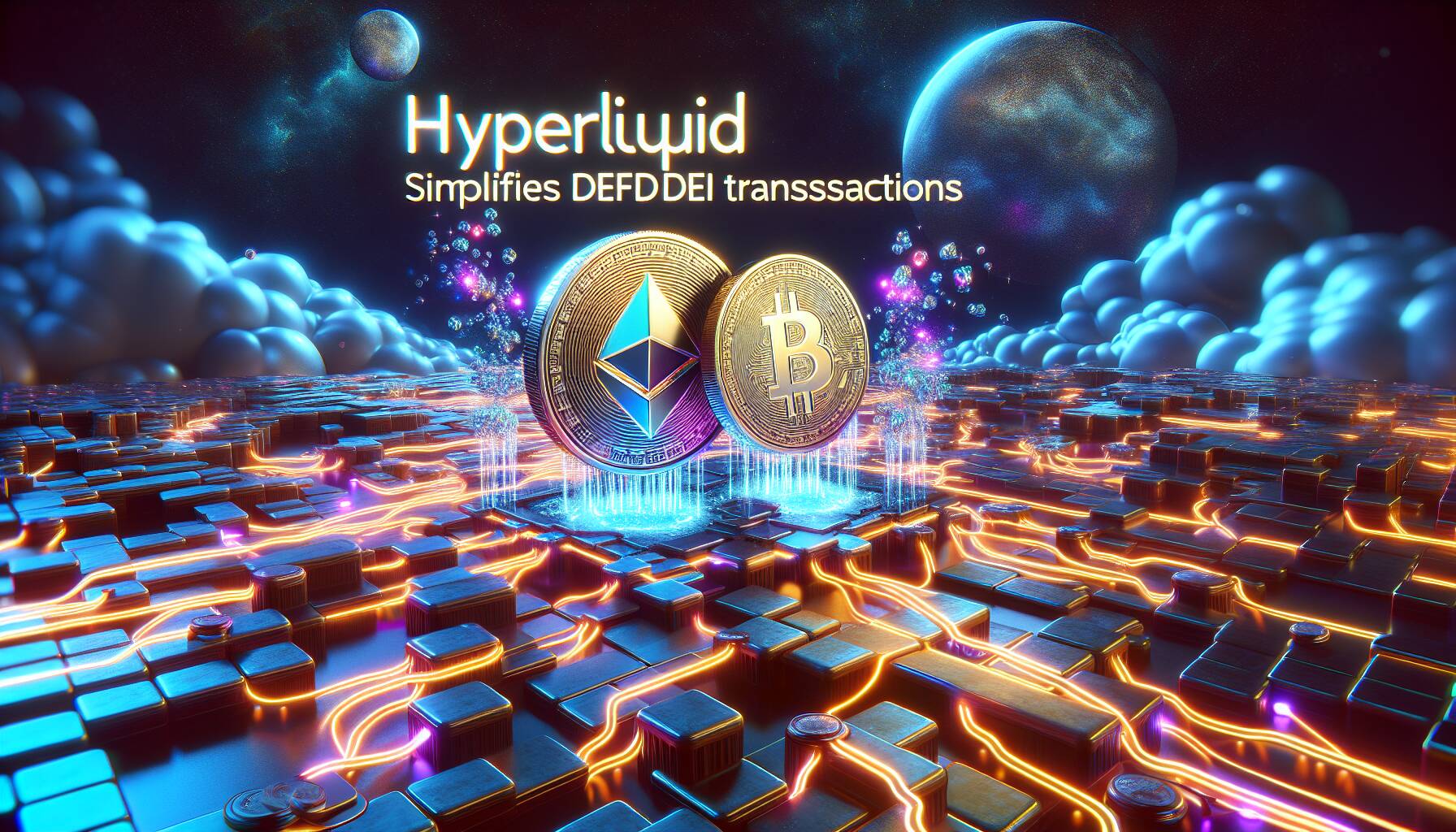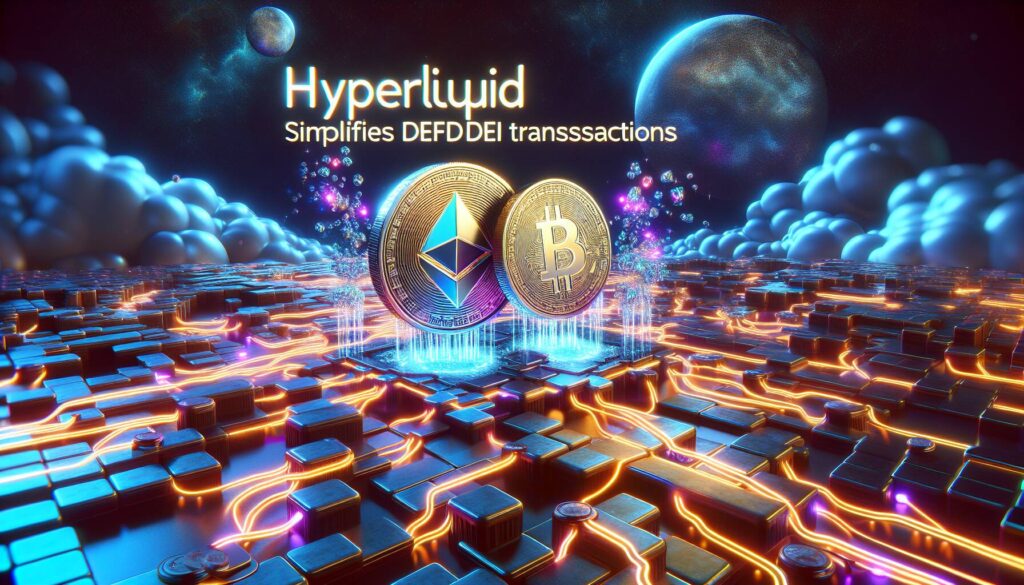The decentralized finance (DeFi) landscape is rapidly evolving, serving as a significant catalyst for value creation within the cryptocurrency sector. Yet, its intricate systems often leave users feeling overwhelmed due to the complexities surrounding blockchains, wallets, and tokens. In a bid to simplify the experience for both developers and users, Hyperliquid has unveiled a pivotal technical update that allows for the seamless linking of tokens across its HyperCore and HyperEVM platforms.
HyperCore functions as a platform for spot trading, enabling the direct exchange of tokens, while HyperEVM operates as an Ethereum Virtual Machine (EVM) network that facilitates the execution of smart contracts. The recently introduced linking feature allows what are termed “Core spot” tokens on HyperCore to connect with “EVM spot” tokens on HyperEVM, streamlining the transfer process. Users can now engage in straightforward actions like “spotSend” on HyperCore or execute standard ERC-20 transfers on HyperEVM, drastically reducing the technical barriers that often deter newcomers in the crypto space.
“This linking gives users access to Ethereum’s rich DeFi ecosystem, including popular services such as lending and borrowing, without leaving the Hyperliquid environment,” Hyperliquid’s team explained in their release.
This development comes as a response to the challenges faced when moving tokens between different networks. For instance, in Ethereum, billions of dollars are locked within platforms like Aave and Uniswap. However, transferring assets from external networks can often involve risky third-party bridges that exacerbate security vulnerabilities. Hyperliquid’s approach, which emphasizes direct token interoperability between HyperCore and HyperEVM, aims to eliminate these security risks by removing the need for intermediaries.
Furthermore, Hyperliquid’s strategy is designed to cater to all user levels, ensuring that even those less versed in crypto’s technicalities can navigate between ecosystems with ease. Unique tokens such as HYPE even benefit from this system by operating natively on both sides of the transaction, requiring no separate contract. While this innovative solution is still in its early stages and carries certain risks—like unverified contracts or supply mismatches—its potential to transform the DeFi landscape is undeniably significant.

The Impact of Hyperliquid’s Technical Update on DeFi
The recent update by Hyperliquid is significant in simplifying the user experience in the decentralized finance (DeFi) sector. Here are the key points that highlight the importance of this development:
- Direct Linking of Tokens:
- HyperCore and HyperEVM platforms can now directly link tokens, facilitating smoother transactions.
- This system reduces the technical barriers for users new to DeFi, allowing easier access to trading and finance functionalities.
- Spot Assets Simplification:
- Core spot tokens on HyperCore can be seamlessly transitioned into EVM spot tokens on HyperEVM.
- Direct actions like “spotSend” streamline the transfer process, reducing user complexity.
- Security Enhancements:
- Eliminating third-party bridges reduces security risks associated with token transfers.
- Verification processes ensure that token supply matches across platforms, bolstering trust in transactions.
- Expanded Access to Ethereum’s DeFi Ecosystem:
- Users can access various DeFi services (lending, borrowing, trading) without switching platforms.
- This integration encourages broader participation in DeFi, potentially increasing liquidity and user engagement.
- Continuous Improvement in User Experience:
- Developers can create applications that require less technical knowledge, encouraging non-expert users to engage with DeFi.
- Tokens like HYPE facilitate transactions intuitively without additional contract requirements, enhancing usability.
“Hyperliquid’s approach significantly lowers the barriers for newcomers to participate in the DeFi landscape, potentially transforming user experiences across crypto projects.”
Hyperliquid’s Breakthrough: Simpler DeFi Transactions
The decentralized finance (DeFi) realm is often perceived as a tangled maze, leaving many potential users frustrated and hesitant to engage. Hyperliquid has seized this moment, unveiling a technical update that simplifies the process significantly through its innovative linking of tokens on HyperCore and HyperEVM platforms. This step forward could serve as a game changer, positioning Hyperliquid ahead of traditional DeFi platforms that still rely on cumbersome bridge systems for asset transfer.
Competitive Advantages: One of Hyperliquid’s main advantages lies in its cohesive ecosystem, allowing users to transition between spot trading and Ethereum’s extensive DeFi offerings seamlessly. By directly linking “Core spot” tokens on HyperCore to their “EVM spot” counterparts on HyperEVM, Hyperliquid eliminates third-party bridges notorious for vulnerabilities. This not only enhances security but also promotes user confidence, especially among those new to crypto. Hyperliquid’s user-friendly approach, with simple actions like “spotSend,” makes it accessible even to novice players in the crypto space, bridging the gap between complex DeFi functionalities and everyday use.
On the downside, this innovative linking process does require diligence from the tokens’ “spot deployers” to ensure supply integrity on both sides, potentially exposing less tech-savvy users to risks associated with unverified contracts or mismatched supplies. As such, there could still be a learning curve for those not familiar with the technical side of crypto, making it crucial for Hyperliquid to provide substantial educational resources.
Who Benefits and Who Faces Challenges: Hyperliquid’s streamlined model will greatly benefit active DeFi users and developers eager to create applications without the hassle of bridging complexities. Investors looking to leverage both HyperCore and HyperEVM will find this integration particularly appealing, as it optimizes trading efficiency. Conversely, traditional DeFi platforms and services that rely on bridges may face increasing competition as users seek more secure and user-friendly alternatives. Additionally, users unfamiliar with the technical aspects may still face challenges, making clear guidance essential for onboarding.
Ultimately, Hyperliquid’s introduction of direct linking is a significant stride in simplifying DeFi transactions, creating new opportunities while also illuminating potential pitfalls. As the landscape evolves, the onus will be on Hyperliquid to continuously adapt and educate its user base to maintain momentum in this fast-paced sector.

















